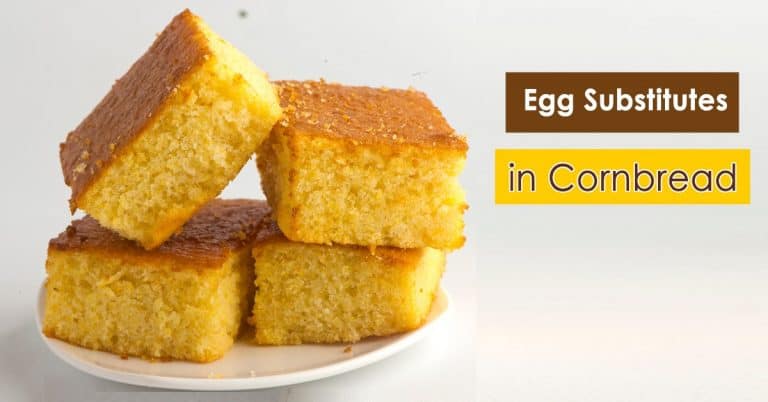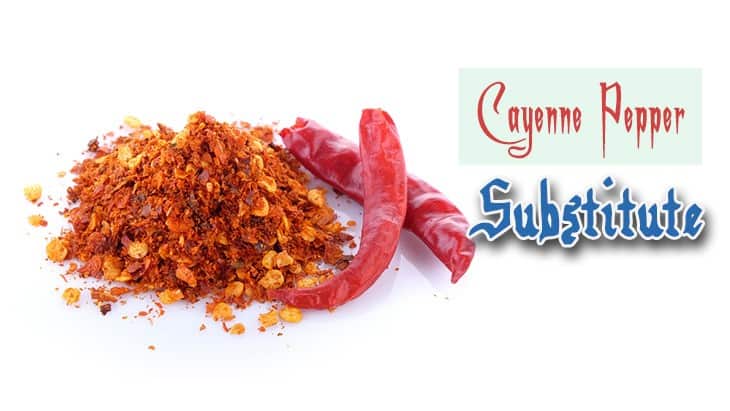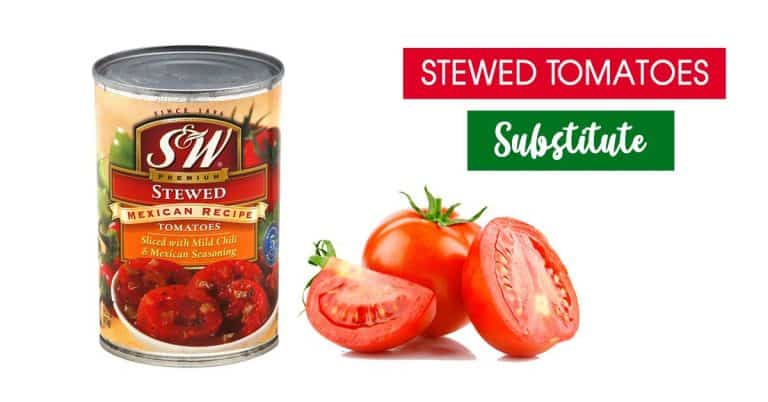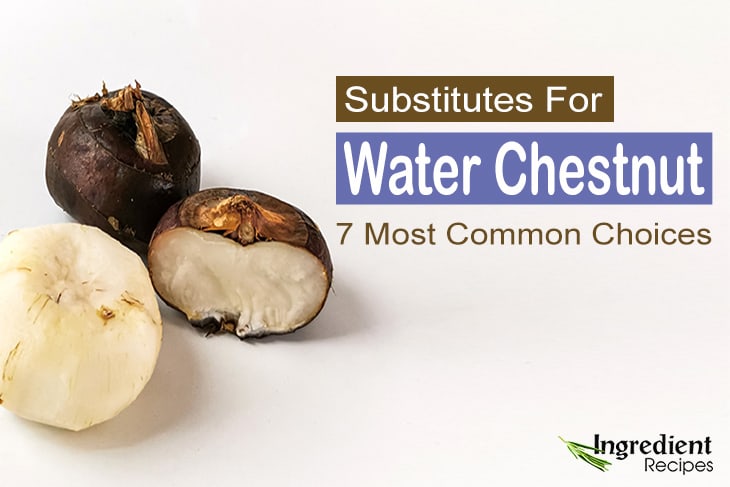
You may need to use other ingredients as substitutes for water chestnuts because it’s not always easy to find them in American grocery stores.
This aquatic plant is only native to a few regions outside of Asia, where people use it in many dishes because of their crispy and crunchy tastes. Water chestnuts have also helped many Americans fall in love with Chinese stir fry takeouts.
If you want to try out some new recipes with these crispy corms, don’t lose hope. Here are some alternative ingredients you may have a look at.
7 Substitutes for Water Chestnuts
These are the most common substitutes for fresh water chestnuts, all of which can bring similar crispness and crunchiness.
1. Canned Water Chestnuts
What is the better choice than the processed and preserved water chestnuts when you can’t find the fresh ones?
Despite not being an ideal option (you may miss some nutty flavors), they still taste practically the same and can be a nice alternative in most situations.
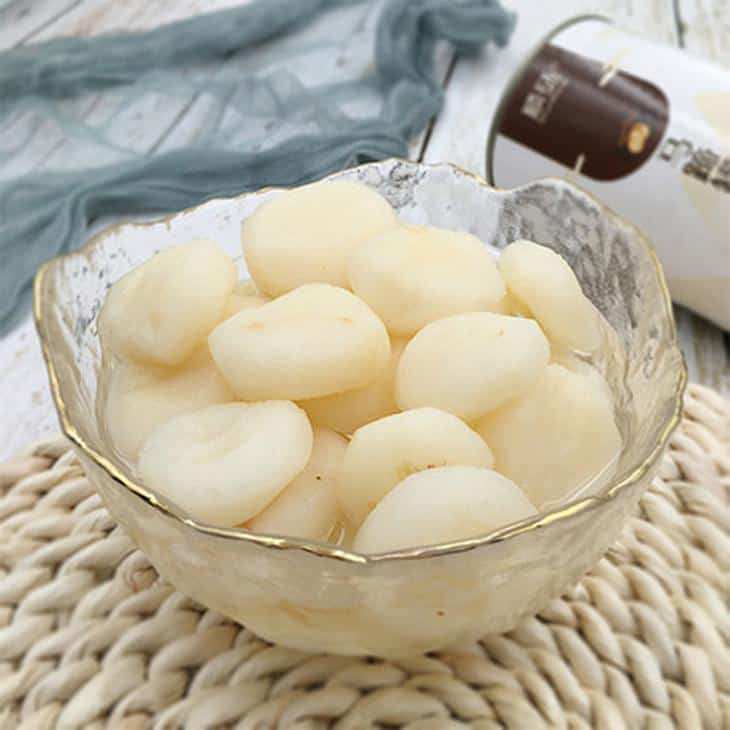
You can use canned water chestnuts pretty everywhere you can with the fresh, from cozy casseroles to spicy stir-fries.
Water chestnuts are unusual tubers. Due to their high level of ferulic acid, canned and cooked water chestnuts remain crisp, so you should not worry about this when using them in place of fresh ones.
This awesome quality is also the reason why water chestnuts are a common ingredient for topping and stir-fry in Chinese cuisine.
Canned water chestnuts retain almost all the health benefits you can get from the fresh tubers.
They are rich in potassium (comparable to bananas), vitamin B6, and fiber. This fiber content can help balance your blood sugar level, avoiding dangerous spikes that are a huge issue for people with diabetes.
As you can expect from its sweetness, the amount of sugar is slightly high, though, at between 2 and 3 grams in each serving.
Opt for canned whole water chestnuts as they have a crunchier texture than the sliced ones.
Once you open the can, it’s advisable to use canned water chestnuts within a few days. Leave them in a cool place and change the water daily if possible.
Like fresh water chestnuts, add these canned tubers near the end of your cooking, so they don’t lose the desired crunchiness. If you have sliced water chestnuts, don’t stir fry them for more than two minutes for the same reason.
Oven roasting is another way to bring the fullest flavor out of water chestnuts, while boiling them will give you a smooth texture for purées and soups.
2. Crosnes
Crosnes have the same texture like water chestnuts with a stronger nutty flavor. The delicate flavor of crosnes may also remind you of Jerusalem artichokes and jicamas.
This vegetable, which looks like a fat grub, was once popular in European cuisine until the 1920s when they started falling out of fashion.
Along with other root vegetables like Jerusalem artichokes and rutabaga, crosnes have seen a resurgence in popularity in recent years. Now it’s not as hard to find crosnes in grocery stores as it was ten years ago.
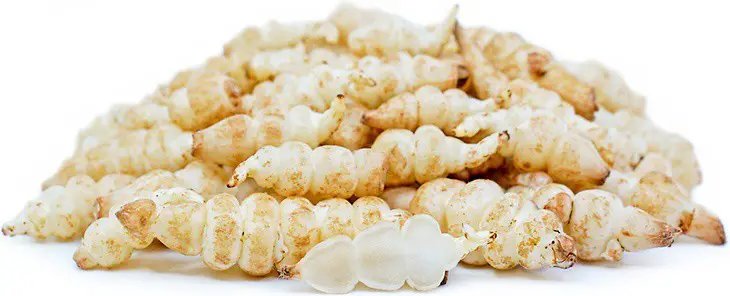
Crosnes have a high content of potassium, magnesium, calcium, and fiber. One of the common usages of crosnes in Asia, where it has always been popular, is reducing headaches and regulating bowel movement.
Unlike regular over-the-counter painkillers, crosnes won’t give you any nasty side effects.You can cook crosnes in the same way you do with water chestnuts and Jerusalem artichokes.
You can use crosnes in small doses as accents to both cooked and raw dishes, such as roasted with chicken or pickled for salads. To bring the fullest flavor of crosnes, put them into center stage and turn them into a confit with herbs and olive oil.
One of the biggest challenges when preparing crosnes is their spiral shape, which makes it practically impossible to scrape or peel.
Luckily for us, the skin is quite thin and can go off easily if you scrub it quickly under running water. Remember not to cook crosnes for too long as they may get mushy.
3. Jicama
The best way to describe Jicama or Mexican turnip, is the combination of water chestnut and a potato. This root vegetable has a golden-brown skin outside and a crisp, white interior.
It’s comparable to water chestnuts thanks to the juicy, crunchy, and refreshing crispness in addition to the nutty flavor. So the fact that it can substitute for water chestnuts should not come as a surprise.
Jicama is originally grown in Latin America, where you can buy a bunch of them from street vendors. It now has spread to Asian countries and the US, thanks to the popularity of Hispanic cuisine.

Just like any other root vegetable, Jicama has a low-carb and high-fiber content. It makes a great ingredient if you are following a keto and low-carb diet.
Dense in nutrients, like vitamin C and other antioxidants, and low in calories, Jicama is an ideal choice for those who want to lose weight in a healthy way.
You can use an equal amount of Jicama or adapt to your taste when substituting for water chestnuts. They can be eaten raw with salads or fried, sauteed, boiled, or steamed.
You will need to peel off the inedible thick, tough brown skin. A regular vegetable peeler may not be strong enough for this task, though, so you may need a knife to cut the outer skin away on a cutting board.
4. Jerusalem Artichokes
Despite their name, Jerusalem artichokes are neither an artichoke nor related to the Western Asian city.
In fact, this vegetable is a variety of sunflower (hence it comes with another name – sunchokes), whose tubers are brown-skinned and lumpy, resembling a ginger root. They are a great alternative for water chestnuts in many recipes.
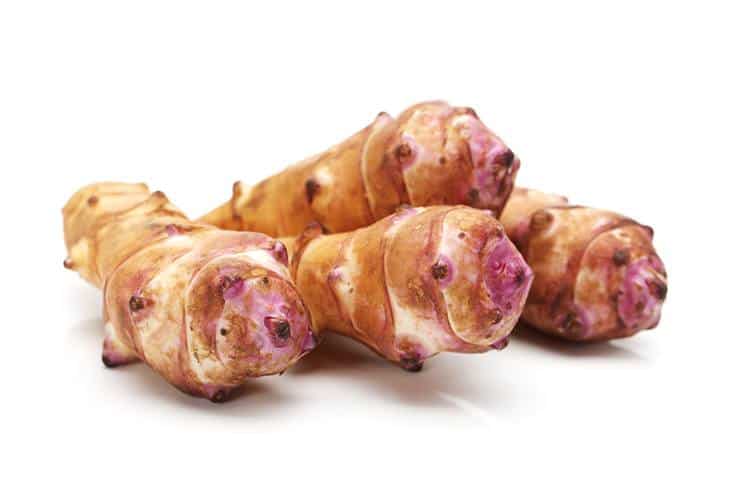
The white flesh of Jerusalem artichokes is crunchy, sweet, and nutty. As they contain mostly dietary fiber, water, carbs, and protein, Jerusalem artichokes are a go-to ingredient for those on a diet. Eating them gives us a feeling of fullness due to the inulin – a water-soluble fiber in these tubers that can be ingested with a great amount of water. This fiber also digests, allowing your body to absorb nutrients better.
To fill in for water chestnuts, you can use the same amount of Jerusalem artichokes. They can be blended into a soup or sliced and fried.
Creamy dishes such as smoked haddock gratins are common starters that feature Jerusalem artichokes. These tubers respond well to roasting, like other root vegetables, and are common in soups, pasta, salads, and risottos.
It won’t take much effort to prepare Jerusalem artichokes. They can be cooked in a similar manner to potato, from steam, bake, saute, to boil and roast. It’s up to you to peel the skin off or leave it on. You can even eat them raw to enjoy the freshness and great texture.
5. Turnips
Even though turnips are at their best in spring and fall, they are available all year round in almost all grocery stores. The vegetable is among the cheapest alternatives to water chestnuts that you can have.
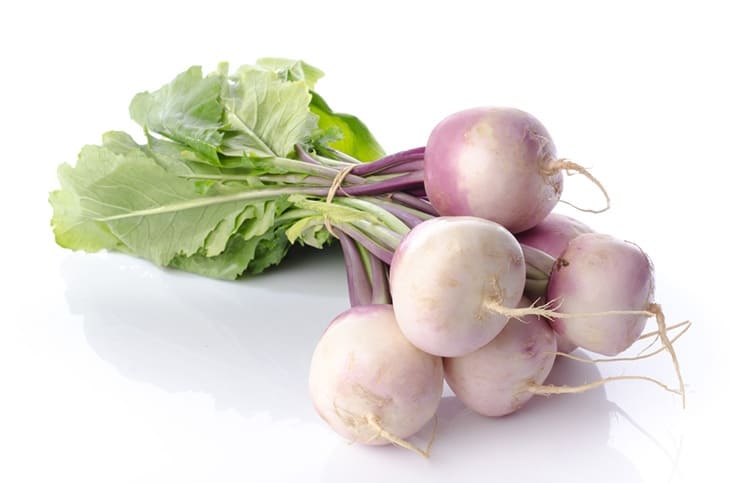
Closely associated with beets and potatoes, this vegetable has been cultivated in temperate climates since ancient times.
Kidney beans with turnips, for example, are a staple in the cuisine of the Indian state of Kashmir. The taste is somewhere between radishes and cabbage, and the texture resembles that of a potato.
Note: If you also want to find a substitute for kidney beans, here are our recommendations.
These root vegetables are a great source of potassium, one of the most important minerals to the human body. It keeps your heart and muscles in good shape and plays a huge role in nerve transmission. Turnips are also rich in vitamin C, calcium, and magnesium.
There are a few key things that you should note while using turnips and other vegetables and fruits like broccoli, though.
They don’t respond well with some medications and may alternate the results of some medical tests. Hence, avoid including these vegetables in your diet if you’re going to do a blood test, for example.
Avoid oversized turnips, which can have a bitter and fibrous taste. Only buy those that are under 3 inches in diameter with crisp, deep green leaves still attached. Also, look for ones that are smooth and firm without blemishes and cracks.
To resemble the way water chestnuts are used in your dishes, slice the turnips and add some oil, water, and salt before covering and cooking them until soft.
Additionally, there are other ways to prepare dishes with turnips you can experiment with, including turnip gratins, glaze turnips, turnip-potato purre, and roast turnips.
Substitutes For Water Chestnut Flour
Water chestnuts have another common yet surprising use – a thickening agent for deep-fried dishes in Asian cuisine.
You would need to boil them first, then peel and dry the water chestnuts before making the flour. Water chestnut flour gives your dish a light crust while retaining the white color.
If you don’t have any or enough water chestnuts to make this thickener, don’t worry. There are some other widely available substitutes for water chestnut flour as well.
1. Almond Flour

Although it’s not a perfect replacement on all occasions (it is less sweet and more granular than water chestnut flour), almond flour is not a bad stand-in.
You can buy it at stores like Walmart or simply make it at home with sweet almonds. You would need to blanch almond nuts first to remove the skin before grinding them into fine flour.
It’s a common mistake to use the name of “almond meal” interchangeably in place of “almond flour,” even though they are results of similar processes.
When making the almond meal, people usually grind the nuts with the skin. As a result, almond meal is coarser and gives a different texture.
Despite being a low-carb thickener like water chestnut flour, almond flour enjoys great popularity as a staple in baked goods and savory dishes. Alongside chickpea flour, it is a common ingredient for grain-free vegan sandwiches.
Note: This is a list of chickpea flour substitutes in case it’s unavailable as well.
Almond flour adds richness and flavor to the final product. It would make a great roux, as it doesn’t contain any starch – the thing that makes cooking liquid stiffer.
You should dip eggs in first to make the almond flour stickier before you coat it over vegetables, chicken, or seafood. Ground almond nuts can shine through as the crunchy topping and fragrant of your casseroles.
Almond flour particularly has a high vitamin E content. It can act as an antioxidant to protect your body from free radical damage, slowing the aging process and reducing the risk of cancer and heart disease.
Magnesium is also quite abundant in this flour. It has many proven health benefits, including lowering blood pressure, reducing insulin resistance, and improving blood sugar control.
2. Hazelnut Flour

Hazelnut flour is a staple in Northern Italian cuisine, where people use it in both sweet and savory dishes. In some areas of this country, groves of hazel trees even enjoy a special protection status.
Ground hazelnuts reflect pretty well the taste and texture of water chestnut flour. The fat content in hazelnut flour renders the dish slightly denser than it would with water chestnut flour.
The flour of hazelnuts is a nutritional powerhouse with a high level of minerals (magnesium, iron, and manganese) and vitamins (vitamin E, K, and many B vitamins).
Phenolic compounds are the most notable antioxidants in hazelnut flour. They reduce the risk of cancer, heart issues, inflammation and cholesterol. Hazelnut flour offers a great source of monounsaturated fats and fiber as well.
Beyond traditional uses like biscotti and pesto, hazelnut flour can act as a substitute for other flours like water chestnut flour and wheat flour.
It brings a subtle buttery taste and nutty flavor into sweet and savory dishes. Whether it’s baking or dredging vegetables or meat for frying, this versatile flour won’t disappoint you.
If you have some hazelnut flour for later use, remember to store it properly. Place this flour in a sealed bag or an airtight jar in your freezer, especially in warm months.
Frequently Asked Questions
Can Chestnuts Be Used In Place of Water Chestnuts?
Even though chestnuts and water chestnuts have similar names, they come from different plant families and can’t be used as substitutes for each other.
Chestnuts belong to chestnut trees, several of which are native to China, Japan, America, and Europe. Each capsule of those trees usually contains from two to seven nuts, each with its own shell. Except when they have been boiled or roasted in their shells, raw chestnuts aren’t edible.
On the other hand, water chestnuts aren’t “nuts” but underground stem enlargements called “tubers” or “corms.” They grow well in marshy fields and along the waterways in Asia, their homeland. They can be eaten raw or cooked.
How To Store Water Chestnuts?
It may be hard to find water chestnuts sometimes. So if you’re lucky enough to have a great amount of them, store them properly for later use. Don’t peel the fresh water chestnuts if you don’t need any for immediate use.
Keep them unpeeled in your fridge, soak them in water if possible to preserve the crisp texture.
Where Can I Buy Water Chestnuts?
In the US and Europe, tubs of fresh water chestnuts are usually available in Asian markets, such as New York City’s Chinatown. As most of them are imported from Asia, you should select only firm water chestnuts by slightly squeezing each of them.
Final Words
If you fail to find fresh water chestnuts in your local grocery stores, it’s unnecessary to lose hope and change your recipe. There are plenty of other options you can choose from to at least mimic some aspects of water chestnuts’ flavor and texture.
You might have never used those substitutes for water chestnuts before, or the final taste isn’t always agreeable, but it’s still a fun opportunity to improve your culinary skills nonetheless.


